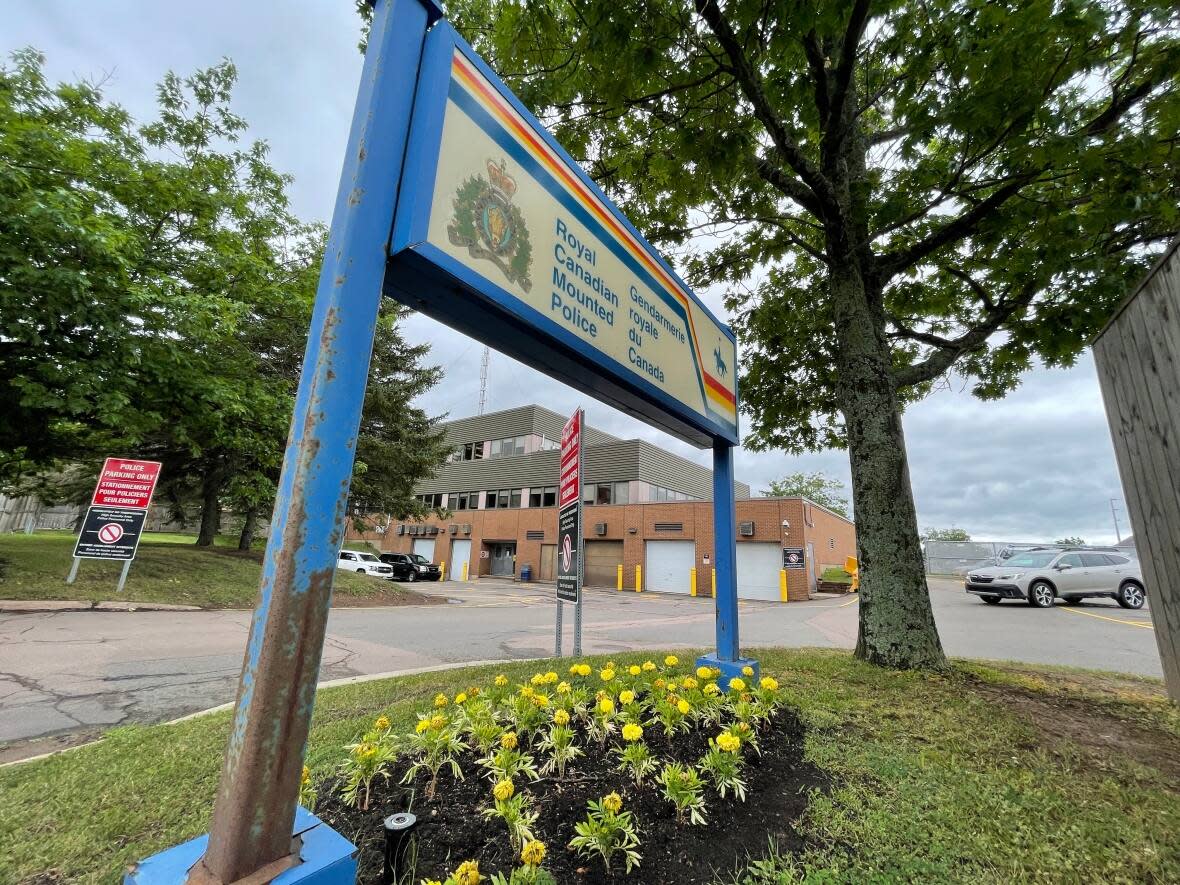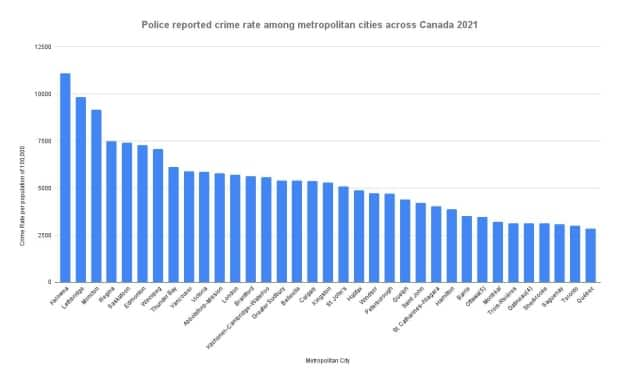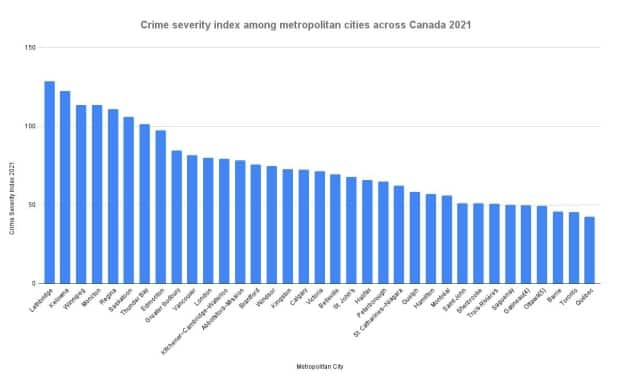Moncton ranks 3rd in crime rates in Canada for 2021, according to StatsCan data

A new report from Statistics Canada reveals Moncton had the third-highest police-reported crime rate in Canada in 2021.
Among metropolitan cities, only Kelowna, B.C., and Lethbridge, Alta., had higher crime rates in 2021, according to the Aug. 2 report.
The traditional crime rate has been used to measure police-reported crime in Canada and is expressed as a rate per 100,000 people. The crime rate is calculated by summing all Criminal Code incidents reported by the police and dividing by the population count.
In Moncton, the rate jumped seven per cent, from 8,588 per 100,000 people in 2020 to 9,168 in 2021

Moncton also ranks fourth in terms of crime severity index, or CSI, which increased by nine per cent.
Warren Silver, an analyst from Statistics Canada, said the CSI increase was because of more reported severe crimes.
"So basically we're saying crime is nine per cent more serious in 2021 than it was in 2020. And what's really driving that increase is an increase in breaking and entering, as well as sexual assault Level 1," he said.
Sexual assault is ranked based on levels of severity by Statistics Canada. Level 1 is the least severe, including any violation of sexual integrity of the victim. Level 2 sexual assault includes a weapon, bodily harm or threats with a weapon. Level 3 is also known as aggravated sexual assault, which involves sexual assault that wounds, maims, disfigures or endangers the life of the victim.
The numbers only include police-reported crimes, and the report mentions that any increases in 2021 may be due to a decrease of reported crimes in 2020 because of the COVID-19 pandemic.
Moncton counsellors recently held a special meeting to debate a public safety plan in June, which included 22 recommendations with no timelines or costs.
Among those are clearing tent cities within 72 hours, and spending more money to boost the number of RCMP officers in the region.
Kevin Walby, a criminologist from the University of Winnipeg, said increasing the police budget is not a solution to these numbers.
"To increase the police budget more, it's just never going to work. "
"The only way that we can decrease transgression and actually produce safer, healthier communities is to fund community and social development, fund non-punitive approaches to remedying transgression and harm."

Police board says more officers could help
Don Moore, the chair of Codiac Regional Policing Authority board, said he thinks increasing police presence is part of the solution to decrease crime rates.
"I think that there are other solutions. However, as a police authority, we have our mandate of what we're supposed to do," said Moore. "This is not just a police solution. There are other aspects to making this work in an overall strategy."
Meanwhile, according to the report the crime numbers in Saint John decreased in 2021 by about four per cent from the year before. In 2020, Saint John had the third-highest crime rate, but in 2021 it landed 28th on the list of all Canadian metropolitan cities.
"The noticeable decrease in robberies could certainly contribute to the change," said Saint John Police's Sgt. Sean Rocca.
Provincially, New Brunswick has the eighth-highest crime rate from the 14 provinces and territories, and increased by eight per cent from the year before, putting it above the national average. Northwest Territories, Nunavut and Yukon had the highest crime rate among provinces and territories.
But Cpl. Hans Oullette, a media spokesperson for the RCMP in New Brunswick said the province is still "a safe place to live."
"Numbers may increase or decrease year over year, but that does not necessarily indicate a trend because of all kinds of different factors," he said.
Violent crime severity in New Brunswick increased by seven per cent from last year, whereas the youth crime rate decreased by five per cent.
Moore said the Codiac Regional Policing Authority embarked on a new plan for policing in the region. After engaging with 80 communities and receiving community input through surveys, municipal elected officials will review and create recommendations.
A report is set to be released for September.
"We want to take ... the next 3 to 5 years to move the needle in a positive way for safety and security in our community," said Moore.
Walby said spending more money on policing has not made much difference on the crime rate in the past, and he said Moncton should consider other options.
"We've seen that the more and more money that goes into policing, it has very little effect on transgression," he said. "So there's a disconnect there. Police are saying they keep us safe and they produce safety in society. But none of the numbers really suggest that they do."
Sharp national rise of sexual assault and opioid-related offences
Canada had an overall crime rate increase of 1 per cent. This rise was primarily driven by an 18 per cent increase in the rate of Level 1 sexual assault, which in total accounted for 98 per cent of police-reported sexual assaults in 2021.
Canada's sexual assault rate in 2021 is the highest since 1996.
"The number of sexual assaults reported by police is likely a significant underestimate of the true extent of sexual assault in Canada, since these types of offences often go unreported to police," said Statistics Canada in its report.
Reported hate crimes have also increased, up by 36 per cent from 2020 in Canada. In total, the number of police-reported hate crimes rose 72 per cent from 2019 to 2021.
Nationally, there was a continued decrease in rates of breaking and entering, theft of less than $5,000, and robbery.
Opioid-related offences were the only type of offence related to a specific drug to increase over the last two years in Canada. All opioid-related offences increased by 13 per cent than the previous year. Those offences include possession, trafficking, production and importation or exportation offences.
The Public Health Agency of Canada said the COVID-19 pandemic is worsening the ongoing public-health crisis of opioid overdose deaths and hospitalizations. During the first year of the pandemic there were 7,362 opioid-related deaths, a 96% increase from the previous year, according to the agency.


